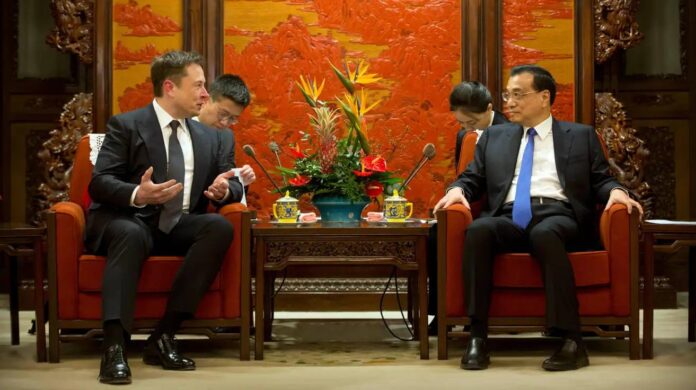Elon Musk’s recent surprise visit to China and decision to skip a planned trip to India has raised eyebrows and sparked debates about the much-hyped ‘China plus one’ strategy. The maverick entrepreneur’s move serves as a wake-up call for India, reminding the nation that the coveted opportunity to replace China as a global manufacturing hub cannot be taken for granted.
For years, India has been viewed as a prime contender to benefit from the global supply chain diversification efforts, as companies seek to reduce their overreliance on China. Factors such as geopolitical tensions, trade disputes, and the COVID-19 pandemic have all contributed to this shift, with the United States actively encouraging businesses to explore alternative manufacturing destinations. India, with its vast potential, competitive corporate tax rates, and the government’s proactive initiatives like the Production-Linked Incentive (PLI) scheme, seemed well-positioned to capitalize on this opportunity.
However, Musk’s decision to prioritize China, where Tesla has a significant presence and its first Gigafactory outside the United States, over India, should serve as a wake-up call. It underscores the fact that the ‘China plus one’ advantage is not a given, and India must redouble its efforts to enhance its competitiveness and attract global giants to establish manufacturing operations within its borders.
The data paints a sobering picture. While India has made strides in attracting investments and bolstering its manufacturing capabilities, other nations like Vietnam have been more successful in capturing a larger share of the business relocating from China. Vietnam’s electronics exports to the United States have surged from $12.1 billion in 2018 to a staggering $51.2 billion in 2023, while India’s exports in the same sector have grown from $1.3 billion to $8.9 billion during the same period. Solid growth on the Indian front, but a lot more needed where that came from.
This disparity highlights the need for India to adopt a more strategic approach and address the factors that may be hindering its ability to fully capitalize on the ‘China plus one’ narrative. While initiatives like the PLI scheme and infrastructure push have been commendable efforts, more needs to be done to streamline regulatory frameworks, foster an ecosystem conducive to innovation and growth, and enhance the overall ease of doing business.
It’s not as if China is going to sit idly by as others come grab a slice of their cake either. President Xi Jinping’s response to the post-COVID economic challenges has been to double down on Beijing’s plans to dominate the industries of tomorrow. China has embarked on an ambitious plan to lay the foundation for a technology-powered, low-cost manufacturing revolution, built around what they call “new productive forces.” This strategy aims to accelerate advanced manufacturing industries, create high-
productivity jobs, and reduce dependence on US technology, ultimately challenging America’s superpower status. This can be seen in the state-sponsored international forays of brands such as BYD, with even Xiaomi launching its first EV, even if looks like a poor version of a Porsche McLaren lovechild.
Regardless, with an annual investment of a staggering $1.6 trillion in “new productive forces,” nearly half of the total business investment in the US in 2023, China is poised to flood the global economy with mass-produced, low-cost, high-tech goods. This move has the potential to disrupt job markets, incomes, and growth in other countries, posing a significant challenge to the ‘China plus one’ narrative and the hopes of nations like India to emerge as alternative manufacturing hubs.
India must act swiftly and strategically to seize the opportunities that lie before it. While the PLI scheme and infrastructure push have been positive steps, more needs to be done to enhance India’s competitiveness and attract global giants to establish their manufacturing operations within its borders. Collaboration with industry leaders, streamlining of regulatory frameworks, and a relentless focus on fostering an ecosystem conducive to innovation and growth will be crucial.
The ‘China plus one’ narrative presents a golden opportunity for India to assert its position on the global stage and contribute to the reshaping of supply chains. However, it is an opportunity that cannot be taken lightly, lest it slip us by. By leveraging its strengths, addressing its weaknesses, and forging strategic partnerships, India can pave the way for a prosperous and self-reliant future as a manufacturing powerhouse.
The road ahead will not be easy, but with unwavering determination, a forward-thinking vision, and a shared commitment to economic growth, India can navigate the challenges and emerge as a formidable player in the global manufacturing arena. The time to act is now, for complacency could prove costly in the face of a rapidly evolving global economic landscape.


